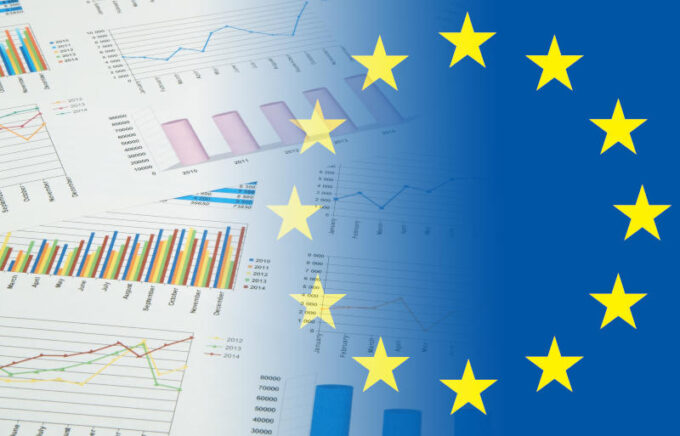
How to manage power dynamics in high-stakes negotiations
Former FBI agent Joe Navarro explains how to leverage non-verbal cues, manage power dynamics, and build trust to overcome deadlocks in negotiations....

by Richard Baldwin Published September 17, 2024 in Competitiveness • 7 min read
“Super Mario” is back. Europe has called on Mario Draghi, former Italian prime minister and president of the European Central Bank, to help inject some dynamism back into the continent’s sputtering economy.
European Commission president Ursula von der Leyen last year appointed Draghi as a special advisor to develop a report on the future of European competitiveness, which was published last week. The move came amid criticism that von der Leyen’s focus on the green transition neglects business needs.
Draghi was feted for his role in saving the euro during the eurozone debt crisis – and for his efforts to revive Italy’s economy during the COVID-19 pandemic. His recent essay in The Economist advocating for deeper fiscal integration in the eurozone, followed by his new advisory role, has been met with enthusiasm in Europe. But he has his work cut out.
Europe’s economic growth has been lagging that of the US, as the media has been at pains to point out. The disparity has become more pronounced due to the slow recovery from the pandemic, insufficient development in digital transformation, and underinvestment in artificial intelligence (AI). Between 2018 and the third quarter of last year, Europe’s AI companies attracted only €32.5bn in investment, a figure that pales in comparison to the €120bn amassed by US firms.
Draghi is developing a strategic policy plan to bolster Europe’s competitiveness. In my opinion, key recommendations must include the creation of a banking and capital markets union, policies to boost venture capital, and an embrace of generative AI (GenAI) that is forward-leaning but also socially minded. These measures are essential for closing the growth gap with the US and ensuring long-term prosperity for Europe.
CEOs and business leaders have a pivotal role to play in advocating for these changes and adapting their strategies to leverage the proposed policy shifts. By doing so, they can help steer Europe towards a more prosperous and competitive future.
The International Monetary Fund (IMF) has pointed out that Europe has not rebounded as effectively from COVID-19 as the US. America’s GDP has risen by 8.7% above pre-pandemic levels, compared with only 3.4% for the Eurozone. But the prolonged economic slowdown can be traced back to the global financial crisis of 2008-09, after which Europe seems to have been set on a permanently lower growth path.
This slow recovery since COVID-19 has multiple underlying causes, including:
Europe’s economy was hit harder by the virus and experienced a deeper economic contraction compared to the US. This was in part because Europe’s economy is more reliant on sectors that were more severely affected by the pandemic, such as tourism and hospitality. As these sectors were slower to recover compared to other areas like technology and healthcare, the US economy recovered faster.
The US government reacted faster and stronger to COVID-19. This helped the US engineer a faster recovery, boosting consumer spending and investment. Moreover, the US has maintained a much more expansionary fiscal policy since as far back as 2008. The US debt-to-GDP ratio has shot up faster than Europe’s, with few consequences given the dollar’s central place in the world economy.
Europe has not kept pace with the digital revolution. This is evident in stock market performance, where US-based tech companies such as Google and Microsoft lead significantly. Europe’s slow adoption of AI has hindered productivity growth and economic dynamism. The ECB estimates the Eurozone’s productivity has fallen by some 20% behind the US since the mid-1990s. At least some of this is due to Europe’s digital tardiness.
Europe has been far more affected by the energy shock arising from Russia’s invasion of Ukraine. The US is a net exporter of energy, and so was less impacted by the hike in gas prices than Europe. The energy price shock stoked inflation and raised production costs in Europe, thus slowing economic growth.
Since the end of 2023, the US central bank has cut interest rates faster and further than the ECB. This provided more support to aggregate demand in the US compared to the euro area.
The lack of robust VC funding in Europe has stymied the growth of new companies and limited the region’s ability to innovate and compete on a global scale.
A labor market shift caused by the pandemic has resulted in a new equilibrium of lower productivity in Europe. This is partly due to the widespread job retention schemes in the eurozone during the pandemic. While these schemes preserved employment, they also hindered the movement of workers from low-productivity to high-productivity sectors.
Also, Europe’s venture capital (VC) market remains significantly underdeveloped compared to the US. Venture capital is crucial for funding startups and fostering innovation. The lack of robust VC funding in Europe has stymied the growth of new companies and limited the region’s ability to innovate and compete on a global scale.
Moreover, regulations in Europe have hindered new firms from thriving and existing firms from innovating, especially in the digital space. For example, Talkdesk, a customer service platform founded in Portugal in 2011, moved its headquarters to the US to benefit from a larger market, better funding sources, and a more accommodating regulatory climate.
While regulation ensures market stability and consumer protection, overly stringent rules can stifle competition and innovation. Reforming the regulatory environment to support new businesses is crucial for Europe’s economic growth.
A unified banking and capital markets system would also attract more investment into Europe, boosting economic growth and competitiveness.
To revitalize Europe’s economic growth and close the gap with the US, I propose the following strategic policy recommendations:
Establishing a comprehensive banking and capital markets union for Europe is crucial. Such a union would create a more integrated and efficient financial system, providing businesses with better access to capital. This integration would enhance liquidity, reduce funding costs, and facilitate the growth of new and innovative companies. Additionally, it would provide small investors with better opportunities for portfolio diversification.
A unified banking and capital markets system would also attract more investment into Europe, boosting economic growth and competitiveness. This integration would also enhance cross-border investments, making it easier for companies to access funding from different parts of Europe. Policymakers should focus on harmonizing regulations, reducing barriers to cross-border investments, and creating a more cohesive and efficient capital market.
Boosting venture capital investment in Europe is imperative for fostering innovation and economic growth. Policies to encourage venture capital investment include:
GenAI has the potential to transform Europe’s services sector, offering significant advantages in service exports. To harness its potential, Europe must:

Despite its challenges, Europe has a clear comparative advantage in the global services sector. This enabled it to achieve a trade surplus in services with its non-EU trade partners, meaning the value of services sold to non-EU countries exceeds the value of services purchased from them.
What’s more, the integration of AI in services could enhance productivity, improve quality, and reduce costs. It is vital for European service providers to adopt and experiment with AI to maintain and enhance their competitive edge. This could transform Europe’s services sector, making it a global leader in high-quality, cost-effective service exports.
By establishing a banking and capital markets union, fostering venture capital, embracing AI, and reforming regulatory frameworks, Europe can close the growth gap with the US and ensure long-term economic growth and competitiveness.
Policymakers must act swiftly and decisively to implement these recommendations, ensuring that Europe not only recovers from the pandemic but thrives in the post-pandemic world.

Professor of International Economics at IMD
Richard Baldwin is Professor of International Economics at IMD and Editor-in-Chief of VoxEU.org since he founded it in June 2007. He was President/Director of CEPR (2014-2018), a visiting professor at many universities, including MIT, Oxford, and EPFL, and a long-time professor of international economics at the Graduate Institute in Geneva. Richard is an expert in global economic policy and theory, specializing in international trade.

May 6, 2025 • by Anna Cajot in Competitiveness
Former FBI agent Joe Navarro explains how to leverage non-verbal cues, manage power dynamics, and build trust to overcome deadlocks in negotiations....

April 24, 2025 • by Jerry Davis in Competitiveness
Many regional developers have tried and failed to emulate Silicon Valley’s VC-driven model for innovation. Detroit, the birthplace of Ford, is following an alternative route – with promising results....
 Audio available
Audio available
April 16, 2025 • by Benoit F. Leleux in Competitiveness
How a private equity-backed corporate carve-out created a successful, sustainable consulting powerhouse...

April 11, 2025 • by Jim Pulcrano, Jung Eung Park, Christian Rangen in Competitiveness
Founders searching for funding must be targeted in their approach to securing a lead investor. A global survey of VCs offers valuable insights into what makes them tick....
Explore first person business intelligence from top minds curated for a global executive audience